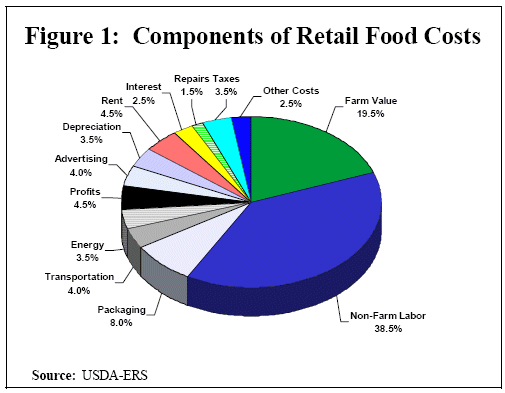AG-ECO NEWS
Vol. 24, Issue 13, May 1, 2008 – PDF version
Jose G. Peña
Texas AgriLife Extension Economist-Management
Farmers Not to Blame for High Food Prices and Purported Food Shortages
The media has been full of stories expressing concern for rising food prices and purported potential food shortages. By implication, farmers and the diversion of corn use for ethanol are seen as the principal causes for food price increases. When you look at production figures, however, the diversion of corn for biofuel production, while a contributing factor, is not the principal cause of high food costs. There are many other factors driving increases in food costs which have a far greater impact on rising food costs than rising corn prices due to the increased use of corn for biofuel production.
According to USDA’s April 9, 2008 World Agricultural Supply and Demand Estimates, corn production during the 2007/08 season at a record 13.074 billion bushels was up 2.535 billion bushels from 10.535 billion bushels produced during the 2006/07 season. While corn use for ethanol production has almost doubled since 2005, this 2.535 billion bushel increase in production almost off-set the estimate of 3.1 billion bushels of corn to be used for ethanol production during the 2007/08 season. If you take this almost full off-set out of the supply/demand equation, food prices would still be high because the diversion of corn for ethanol production is not the principle driving force. The record $118 plus/barrel oil price, which permeate the entire food system, has a far higher impact on increased food costs than the diversion of corn for ethanol production. Other factors include increased labor costs, increased grain exports as a result of reduced foreign production due to droughts and a weak dollar, increased consumer demand for more expensive imports, increased consumer choices for more expensive organic products, opportunistic price increases in the food chain and the list goes on.
In terms of the potential continued increases in food costs as influenced by energy costs, it appears doubtful that oil prices will make a significant down turn. According to recent reports, world oil production has leveled out at about 82 million barrels per day for the past several years. China and India are increasing energy consumption to satisfy a growing population. Demand will continue to rise as the economies of these two and other countries improve, increasing demand for cars and other high energy consuming products.
The U.S. continues to produce the best, most abundant and least expensive (in relation to disposable income) food in the world.
Beyond increased energy costs, the rising cost of labor may be one of the most important factors driving food prices higher. Non-farm labor accounts for 38.5 percent of the cost of food, a proportion that has been increasing, while the farm value of the cost in food has been a diminishing proportion of the final price. (See Figure 1). Since the 1950s, an increasing percentage of the retail food bill has been taken up by marketing (the cost added after the product has passed out of the farm gate). In return, farmers have taken a smaller and smaller portion. In 1950, farms took 41 percent of the total retail cost of food. By the 1970s, it was down to 33 percent. Today, it is less than 20 percent. 
Production Costs Up
While the rise in commodity prices is boosting gross farm income, USDA-ERS’ latest U.S. agricultural production cost estimate indicated that U.S. production expenses in 2008 at $279.2 billion will be up about 8.6 percent from 2007 and up about 25.5 percent from 2005, the year prior to the recent increase in energy cost. Production costs in Texas will be much higher than the national average. Meanwhile, government farm subsidy payments are expected to be about 30 percent below the average of the last ten years (1998-2007).
While prices for commodities such as wheat, corn and soybeans are touching record highs and the market outlook for most other commodities is good, the current continuing severe drought and substantially increased production costs indicate that the agricultural sector is carrying substantially increased risks.
Food vs. Fuel
The recent diversion of corn for biofuel production is an initial attempt to gain energy independence. But, are biofuels the answer to energy independence? The answer to this question would be “no.” Biofuel production is just one small piece of the solution. Cellulosic ethanol production will help if the technology is able to be commercialized. But, it will take major advances in technology for vehicle mileage improvements, changes in driving habits and changes in modes of transportation, such as reduced reliance on trucks and increased use of barge and rail shipping, increased use of mass transit systems in cities and the development of new fuels such as plug-in cars, hydrogen and other fuel systems yet to be developed.
The food price issue is real and has to be addressed, but it is a much broader issue than biofuels. It will take biofuels and many more components to solve the impending oil crisis.
